
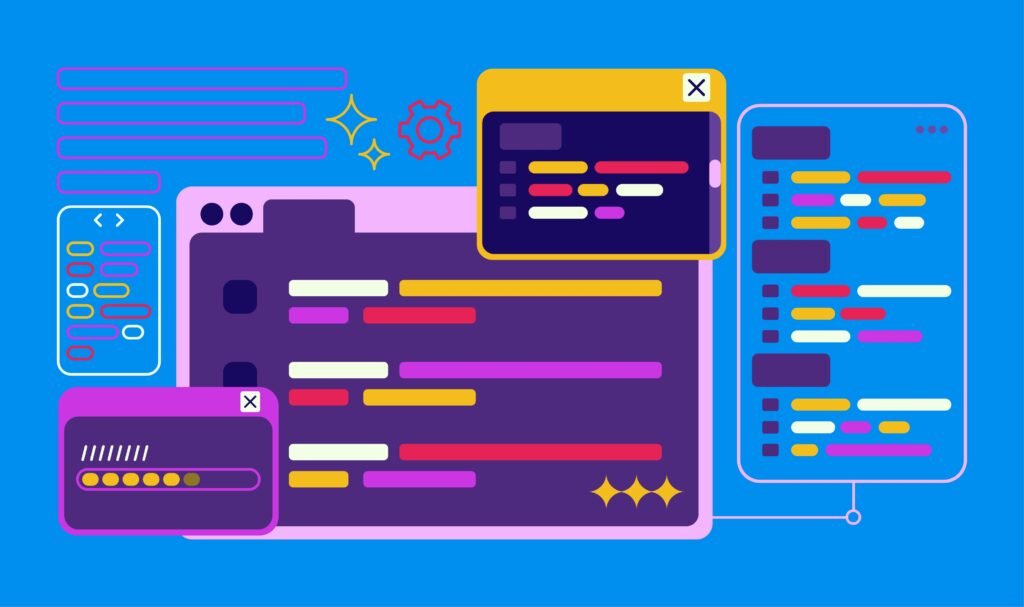
Summary
Self-service platforms: built on a foundation of platform engineering, empower teams to work independently with minimal IT intervention, enabling faster innovation across software and data workflows.
They abstract infrastructure complexity and offer unified access through intuitive portals, automated processes, scalable environments, and continuous feedback loops.
To implement this strategy, start by establishing an internal platform team focused on building a centralized developer portal (IDP); automate common tasks like environment provisioning, CI/CD, and data integration; enforce observability and governance within the platform; and continuously iterate based on user feedback.
This approach enhances autonomy, boosts productivity, improves resource use, strengthens collaboration, and lays the groundwork for secure, scalable digital transformation across the enterprise.
This is a continuation from the previous blog, which asked the question: What can solve the biggest challenges for IT and business leaders in 2025?
The integration of self-service platforms has emerged as a pivotal strategy for enhancing operational efficiency and innovation. Enabled by the robust capabilities of platform engineering, these platforms are at the forefront of transforming traditional workflows into agile, autonomous ecosystems.
It’s not just about accelerating software development, but also data management.
Gartner predicts that “by 2027, AI assistants and AI-enhanced workflows incorporated in data integration tools will reduce manual intervention by 60% and enable self-service data management.”
(Gartner, Predicts 2025: 4 Ways AI Will Disrupt Data Management Markets and Solutions, By Ehtisham Zaidi, Robert Thanaraj, Adam Ronthal, Xingyu Gu, Nina Showell, Thornton Craig, Michele Launi, Roxane Edjlali, 9 December 2024.)
What are self-service platforms?
Self-service platforms (such as Calibo) are sophisticated digital ecosystems that empower users—such as developers, data analysts, and business users—to independently manage and execute their tasks without reliance on traditional IT support or manual processes.
These platforms embody a “paved road” approach, providing users with pre-configured tools and environments necessary for rapid product development and operational efficiency.
How do self-service platforms work?
Self-service platforms operate by abstracting the complexities of the underlying infrastructure, allowing users to focus solely on their core tasks. By leveraging automation, orchestration, and intuitive interfaces, these platforms facilitate seamless access to resources and capabilities.
- Unified access: users interact with a centralized portal where they can access a suite of tools and services. This includes everything from development environments to data analytics and security services.
- Automated processes: by automating routine and repetitive tasks, such as environment provisioning, code deployments, and data integration, self-service platforms reduce manual intervention and potential errors.
- Flexibility and scalability: the platforms are built to dynamically scale with user needs, allowing for rapid adaptation to changing requirements and workload increases.
- End-to-end accountability: platform teams are crucial, as they maintain and enhance the platform capabilities. This involves continuous iteration based on user feedback, ensuring that the platform evolves to meet emerging needs.
- Full stack observability: allows governance and transparency for both platform teams and developer teams.
What are the benefits of self-service platforms?
The adoption of self-service platforms delivers substantial advantages, transforming the pace and quality of business operations:
- Enhanced developer autonomy: with the ability to manage their applications and services independently, developers can innovate faster without waiting for manual approvals or handoffs.
- Increased productivity: by removing bottlenecks associated with traditional IT processes, these platforms foster a significant reduction in cycle times, allowing faster time-to-market for products.
- Improved resource utilization: the platforms enable better allocation of resources by offering users the necessary tools to perform their roles efficiently, reducing the burden on IT support teams.
- Innovation and agility: organizations can rapidly adapt to market changes by easily integrating new technologies and practices, thus sustaining competitive advantage.
- Simplified processes: self-service platforms enabled by platform engineering hide the complexity from the developers.
- Better collaboration: with shared tools and processes, self-service platforms enhance cross-functional collaboration by providing a unified environment for all stakeholders.
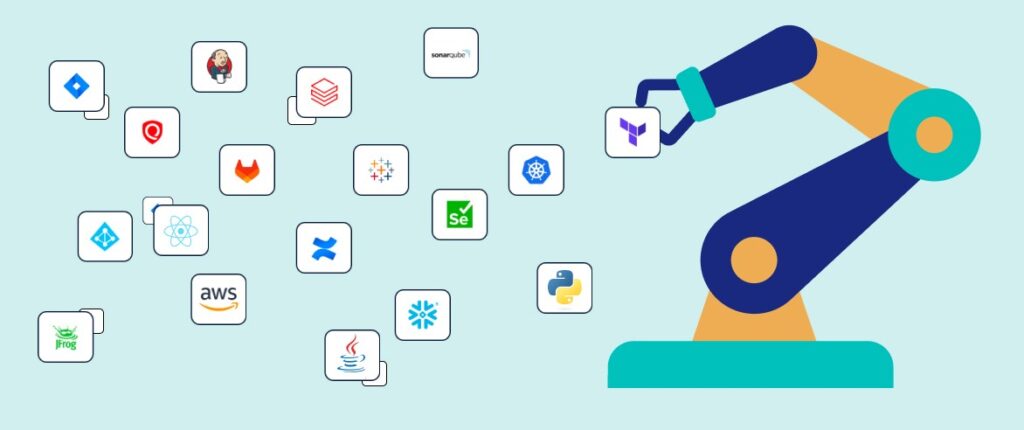
How to enable platform engineering capabilities?
The foundation of successful self-service platforms lies in platform engineering, which provides the structural and technological backbone necessary for these platforms to thrive. More on this in the next chapter!
As businesses continue to embrace digital transformation, self-service platforms enabled by platform engineering capabilities offer an essential pathway to achieving operational excellence, innovation, and agility across the enterprise landscape.
When we talk about self-service platforms, we’re referring to a self-service platform enabled by platform engineering, (such as Calibo, which is a digital and data orchestration platform).
Why create a platform engineering team?
Most companies who set up platform teams in their organization do so mainly because they have too many repetitive tasks, too much manual infrastructure configuration and require automation.
The secondary reason is often the need for standardization in their DevOps setup, perhaps they are using too many disparate tools which often leads to inefficiencies and fragmented workflows.
Often, with overwhelmed developers, cognitive overload can easily lead to burn-out. A large number of tickets are created, and productivity might be very low. Perhaps building and provisioning is too complex; developers need to build apps and provision their infrastructure easily, even if they aren’t experts in Kubernetes.
How does platform engineering accelerate digital transformation?
Platform engineering has emerged as a solution to the messy and slow ways many companies build software. In the past, companies had separate software teams working on their own, which often led to problems getting everyone on the same page and making everything work together. Each team used its own tools and methods, leading to unpredictable results and delays in getting products out the door.
It plays a crucial role in supporting and accelerating digital transformation. As a foundation, software engineering provides the tools and frameworks that platform engineering builds upon to create integrated development environments and systems.
Platform engineering is a software engineering discipline rooted in DevOps principles, aimed at enhancing development teams’ security, compliance, cost efficiency, and time-to-business value.
It focuses on building self-service toolchains, services, and processes to create an Internal Developer Portal (IDP). This shared, secure, and governed framework streamlines developer experiences, empowering teams to innovate and deliver value more efficiently.
Platform engineering involves:
- Automation of DevOps practices: streamlining CI/CD processes to support rapid deployment and iteration cycles.
- Unified infrastructure management: employing infrastructure as a code (IAC) and containerization technologies to ensure environments are consistent, secure, and easily replicable.
- Continuous enhancement: platform teams work with a mindset of continuous improvement, employing agile methodologies to refine platform capabilities.
- Seamless integration: leveraging APIs and modular architectures ensures that platforms remain flexible and adaptable to evolving user and organizational needs.
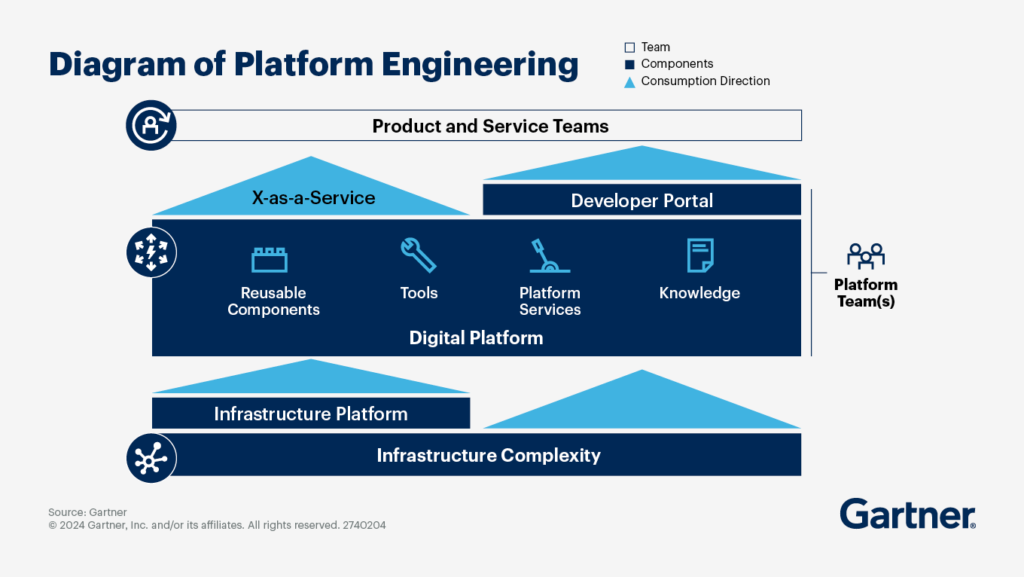
Source: Gartner
Platform engineering is at the heart of software delivery’s future, and it’s a field dedicated to establishing IDPs.
What is an IDP?
Internal developer portals act as the gateway for developers to explore and utilize the features available within internal development platforms.
The internal developer platform capabilities he refers to revolve around the concept of “platform orchestration”. Specifically, capabilities that integrate multiple technologies and tools to automate and standardize repeatable processes – without impeding developers’ ability to innovate freely. Examples of such processes are CI/CD tooling and infrastructure provisioning.
Developer platform capabilities are a subset of the overall solution that a Platform Engineer enables, and the full value of the solution cannot be realized without the portal. IDPs serve software engineering teams by providing the self-service tools essential for a cloud-native development journey.
Essentially, an IDP is a custom toolset, inclusive of services and infrastructure, built to equip developers with what they need to craft, assess, launch, and maintain software applications, all while being finely tuned to the unique objectives and requirements of their organization.
Nearly 75% of workers do not feel equipped to learn the digital skills needed in today’s workplace – which is why you need a single-pane-of-glass platform that anyone can use, regardless of their technical expertise.
For more information about platform engineering please see our previous eBook: ”Your real life guide to platform engineering”.
And for more in-depth information on IDP’s, read our blogs “What is an internal developer portal (and why do you need one)?” or “Do you really need to build your own Internal Developer Platform/Portal?”
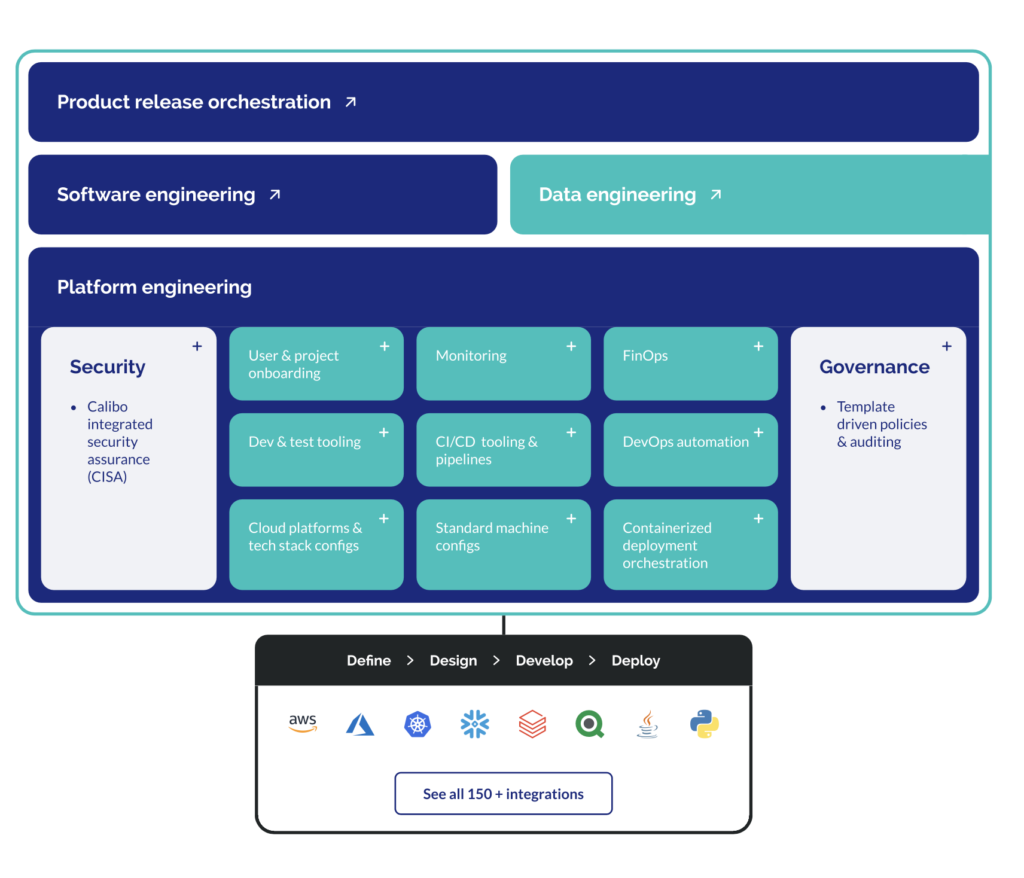
How do self-service platforms address IT and business challenges?
In an increasingly digital world, self-service platforms (enabled by platform engineering) emerge as a crucial discipline that plays a transformative role in overcoming the multifaceted challenges faced by organizations today.
By providing a unified framework for scalable, secure, and efficient operations, self-service platforms (e.g. digital and data platform orchestration tools such as Calibo) empower IT and business leaders, data engineers, and software developers to navigate complexities with agility and precision.
How to streamline operations and standardize processes?
Self-service platforms (enabled by platform engineering) address the critical challenges of managing disparate tools and workflows by creating a cohesive infrastructure framework. This approach enables IT leaders to streamline operations and achieve standardized processes across the organization.
By developing an Internal Developer Portal (IDP), a self-service platform allows teams to access necessary tools, environments, and applications in a self-service manner, drastically reducing the bottlenecks that result from fragmented systems.
The use of IDPs ensures that technology integrations are seamless and scalable, thus enabling IT departments to introduce new technologies without disrupting existing operations.
This significantly reduces the administrative overhead and allows IT teams to focus on strategic initiatives that drive business value rather than routine maintenance.
How to enhancing data consistency and accessibility?
For data engineers, self-service platforms or platform orchestration tools can provide robust data management solutions that resolve the chaotic data landscape. They do so by implementing data orchestration tools that ensure a coherent and comprehensive view of organizational data.
Through robust self-service platforms (enabled by platform engineering) data engineers can gain real-time access to data sources and necessary infrastructure, minimizing delays and boosting project timelines.
Moreover, platform-oriented solutions enhance data governance practices, facilitating data quality, accuracy, and consistency.
By providing a single source of truth (SSOT), self-service platforms empower data-driven initiatives, ensuring that insights generated are precise and actionable. This optimizes the efficacy of data-centric projects and enhances overall decision-making processes within the organization.
How to increase developer productivity and security?
Self-service platforms also significantly alleviate the burden on software engineers. By automating infrastructure provisioning and simplifying toolchain management, platform engineering speeds up development cycles and reduces project delays.
The introduction of standardized, reusable DevOps scripts and environments through platform engineering supports seamless project execution and reduces the risk of errors.
Security is another area where self-service platforms excel. By centralizing security protocols and compliance requirements within the platform, they ensure that software developers can focus on creating innovative solutions without the distraction of managing complex security measures. This reduction in complexity mitigates inefficiencies and minimizes potential security vulnerabilities.
How to facilitate cross-functional collaboration?
For business leaders, the implementation of a self-service platform (enabled by platform engineering) facilitates smoother collaboration between IT and business teams. It creates a shared framework for communication and coordination, thus breaking down silos and fostering an integrated approach to digital transformation.
By enabling cross-functional teams to work together on a unified platform, it ensures that all stakeholders are aligned in pursuit of common organizational objectives.
The scalability of a self-service platform also supports strategic initiatives on a global scale, allowing organizations to adapt quickly to market changes and maintain a competitive advantage. It empowers leaders to drive innovation and deliver value efficiently, even in volatile environments.
Self-service platforms reshape the operational landscape by providing the tools and frameworks needed to address contemporary challenges effectively.
By implementing platform engineering principles, organizations can not only overcome existing obstacles but also lay the foundation for sustainable growth and innovation.

How do self-service platforms address the top CIO challenges?
In our previous blog, we outlined the biggest challenges for CIOs.
Challenge 1: How do I set an AI strategy, get started with use cases, and determine and realize measurable business value?
Self-service platforms (or, in other words, digital and data orchestration platforms such as Calibo), enabled by platform engineering, can support the development and implementation of your AI strategy. They can help initiate use cases and determine and realize measurable business value.
Here’s how:
- Foundation for AI infrastructure: Self-service platforms can provide the necessary infrastructure to support AI workloads, including data storage, processing capabilities, and computational resources. This foundation ensures that AI models have the appropriate environment to perform effectively.
- Facilitating use case development: By offering a streamlined and scalable environment, self-service platforms enabled by platform engineering enable rapid prototyping and development of AI use cases. This helps teams quickly experiment and iterate and find the best AI applications that really work.
- Integration with business processes: Self-service platforms ensure that AI solutions are well-integrated with existing business processes and systems, facilitating smoother adoption and alignment with business goals and objectives.
- Data management and accessibility: AI relies heavily on data, and self-service platforms ensure that data is accessible, clean, and properly managed. This supports the training and deployment of effective AI models by providing high-quality datasets. Self-Service platforms allow organizations to quickly set the data foundations and help in scaling AI initiatives.
Monitoring and performance tracking: Self-service platforms provide tools for monitoring AI models, tracking their performance, and measuring their impact on business objectives. This helps in determining and demonstrating the business value of AI initiatives.
- Cross-functional collaboration: They also foster collaboration between data scientists, developers, and business stakeholders, ensuring that AI strategies are aligned with organizational priorities and that insights are translated into actionable business value.
By leveraging self-service platforms (enabled by platform engineering), organizations can set a strong AI strategy, efficiently explore use cases, and capture measurable business value from AI as a transformative technology.
Challenge 2: How do I create a realistic and effective data analytics strategy aligned to business goals, stakeholders and use cases?
You guessed it – self-service platforms (enabled by platform engineering) can play a crucial role in helping you create a realistic and effective data analytics strategy aligned with business goals, stakeholders, and use cases.
Here’s how:
- Unified infrastructure: Self-service platforms provide a cohesive infrastructure that supports data collection, storage, processing, and analysis, ensuring that all data sources are accessible and integrated. This unified approach facilitates a comprehensive view of data aligned with business objectives.
- Scalable solutions: By building a scalable platform, you can ensure your data analytics strategy can grow with your business. A digital self-service platform allows you to implement scalable data pipelines and analytics tools that can handle increasing data volumes as business needs evolve.
- Collaboration and accessibility: A well-designed self-service platform enables collaboration between data teams and business stakeholders. It makes data and analytics tools accessible to the right people, ensuring a strategic alignment between technical capabilities and business goals.
- Automated processes: Automation within the platform can streamline data analytics workflows, from data ingestion to analysis and reporting, reducing manual intervention and aligning processes with strategic priorities.
- Customizable use cases: Self-service platforms allow you to build customizable analytics solutions tailored to specific business needs and use cases. This flexibility enables you to address unique business challenges effectively.
- Security and compliance: Ensuring data security and compliance is integral to a self-service platform enabled by platform engineering, which safeguards data throughout its lifecycle and aligns with organizational governance and regulatory requirements.
By leveraging a self-service platform enabled by platform engineering, you can create a data analytics strategy that not only addresses technical requirements but also ensures that analytics efforts are in sync with business goals, stakeholder needs, and relevant use cases.
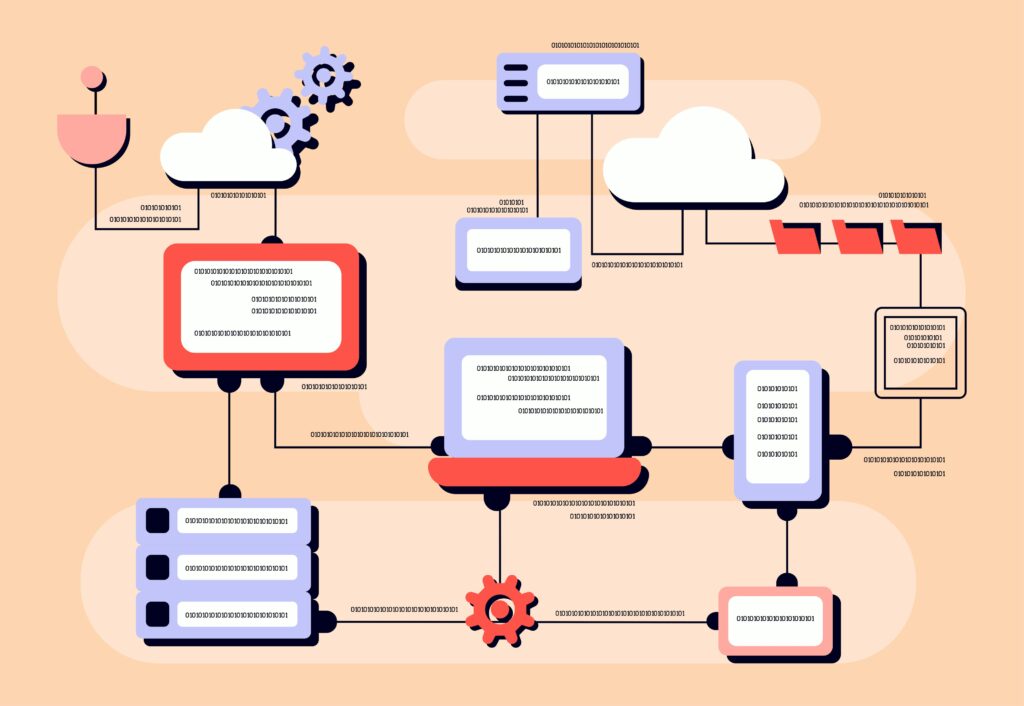
Challenge 3: How do I protect my organization from constantly evolving security threats?
Yes, a self-service platform can also help protect your organization from evolving security threats such as cybercrime and data breaches.
Here’s how:
- Integrated security practices: A self-service platform incorporates security best practices into every layer of the infrastructure, ensuring that security measures are not just an afterthought but a fundamental component of the platform’s design.
- Automation of security protocols: Automation can be used to enforce security policies consistently across all systems. This includes automatic patching, updates, and regular security checks to protect against vulnerabilities.
- Real-time monitoring and alerts: Self-service platforms can include the implementation of continuous monitoring tools that provide real-time alerts and insights into unusual activities or potential threats, allowing for swift responses to any breach attempts.
- Access controls and identity management: Robust access control systems can be established to ensure that only authorized users have access to sensitive data and systems. Identity management solutions help maintain strong authentication processes.
- Data encryption and protection: Data protection strategies, such as encryption both at rest and in transit, are integral to self-service platforms. This ensures that even if data is intercepted, it remains inaccessible and secure.
- Scalable security architecture: As your organization grows, self-service platforms allow for the scalability of security measures. This ensures that as the volume and complexity of data increase, so do the protective measures in place.
- Compliance and governance: Self-service platforms help maintain compliance with industry standards and regulations by embedding governance frameworks within the platform, ensuring all activities adhere to legal and regulatory requirements.
By leveraging a self-service platform enabled by platform engineering, organizations can build a resilient foundation that proactively addresses security threats and continuously adapts to new challenges in the cybersecurity landscape.
Challenge 4: How do I demonstrate business value from technology investments?
Did you know that self-service platforms can play a key role in showing the business value of tech investments?
How they can help:
- Standardization and clarity: By standardizing tech processes, self-service platforms make it easier to track and report on investments, helping everyone see how they support company goals.
- Performance metrics: With strong monitoring tools, you can set clear metrics and KPIs to measure how tech investments impact the business.
- Cost savings: Self-service platforms make processes more efficient, cutting costs and boosting returns, which directly shows the value of tech spending.
- Agility and innovation: They support faster development and innovation, so you can highlight how investments lead to quicker product launches and better services.
- Scalability and flexibility: Scalable platforms support growth and adaptability, crucial for keeping up with market changes, proving their long-term worth.
- Better collaboration: Improved integration across teams leads to better business processes, tying tech investments to business success.
- Customer satisfaction: Track how tech investments improve customer experiences and loyalty, showing their value through enhanced relationships.
Using self-service platforms, businesses can clearly demonstrate how their tech investments add value, aligning them with larger business goals.
Challenge 5: How do I design my organization and talent strategy for today’s challenges?
A self-service platform enabled by platform engineering solves learning and development (upskilling and onboarding) by…
- Centralized skill development: A self-service platform creates a unified environment with standardized tools and processes. This standardization makes it easier for onboarding and training, reducing the time and resources needed for onboarding and development. This makes it easier for CIOs to implement skill-building programs that are consistent and scalable.
- Improved collaboration: By creating shared internal platforms, self-service platforms can break down silos between teams, enabling better collaboration and communication. This can break down silos between departments like AI/ML, cybersecurity, and data analytics, making it easier to share expertise and resources.
- Flexible skill utilization: With self-service platforms automating routine and repetitive tasks, CIOs can better allocate talent to focus on higher-value activities, innovation, and strategic projects, optimizing resource utilization. This helps organizations better utilize the skills of their workforce, particularly in high-demand areas like generative AI and analytics, without needing constant increases in hiring or compensation.
- Recruitment and retention: The adoption of self-service platforms can enhance the developer experience by providing intuitive and powerful tools. This not only attracts top talent but also helps retain existing employees by improving job satisfaction and reducing burnout.
- Scalable processes: Self-service platforms support scalable and efficient workflows, allowing the organization to grow without the growing pains often associated with scaling development teams and infrastructure.
- Innovation and experimentation: With a platform that supports rapid prototyping and experimentation, teams can quickly test and implement new ideas across AI, ML, and cybersecurity. This adaptability attracts talent interested in working in cutting-edge environments and contributes to retaining existing talent by keeping work exciting and engaging.
- Cost management: By optimizing existing resources and improving process efficiencies, platform engineering can help manage compensation costs more effectively. It enables the organization to focus investment on critical areas and skilled individuals who drive the most value.
By leveraging these aspects of self-service platforms, IT and business leaders can design an organization and talent strategy that meets today’s challenges while effectively managing costs and resource allocation.
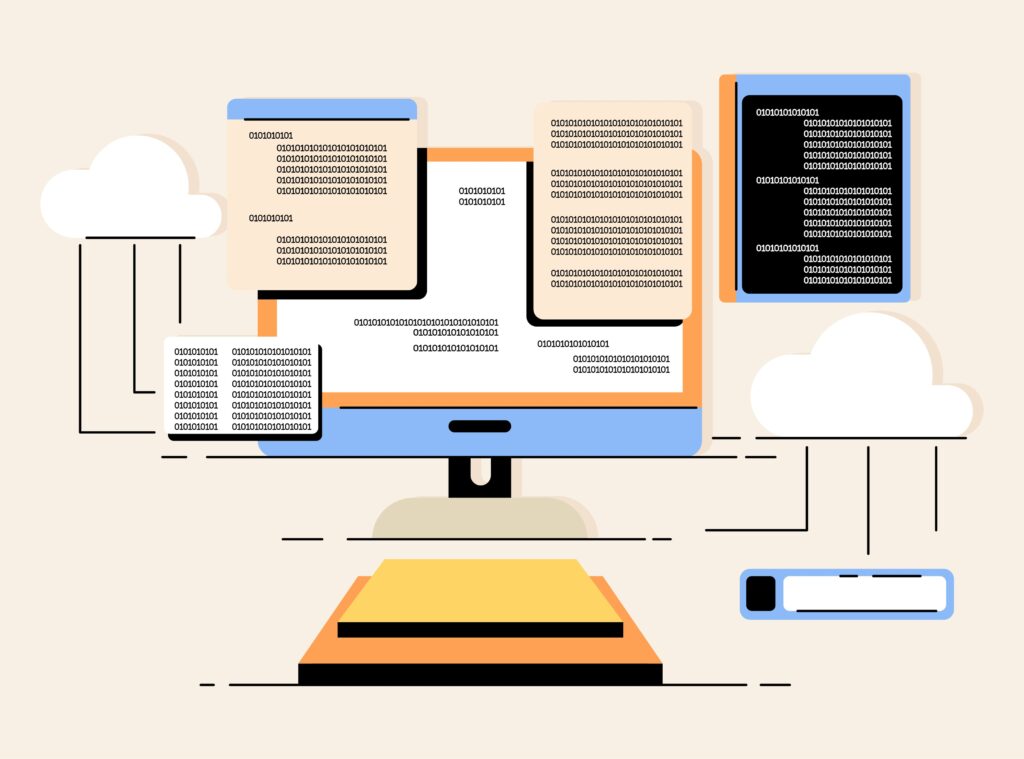
Why should IT and business leaders adopt a self-service platform?
In an era where digital transformation is paramount, adopting a self-service platform is a strategic imperative for businesses aiming to elevate organizational success.
A self-service platform can ensure that IT capabilities are perfectly aligned with business objectives, streamlining operations and enhancing strategic outcomes.
By integrating IT infrastructure with business goals, companies can achieve a competitive edge, delivering products with speed, reliability, and innovation that sets them apart in the market.
Furthermore, self-service platforms enabled by platform engineering can support organizational growth through scalable infrastructures that adapt to increasing demands, while providing the flexibility needed to integrate new technologies and methodologies seamlessly.
This flexibility ensures that businesses remain agile and competitive in a rapidly evolving marketplace. Additionally, improving developer experience through a self-service platform enabled through platform engineering plays a pivotal role in talent retention and attraction, fostering an innovative environment where top-tier professionals are eager to thrive.
Finally, with enhanced risk management through automation and proactive issue resolution, self-service platforms mitigate disruptions and ensure stable, high-quality service delivery.
For IT and business leaders, these strategic advantages underscore the importance of self-service platforms as a cornerstone for sustainable growth and excellence:
1. Strategic alignment
- Business objectives: Self-service platforms facilitate the alignment of IT capabilities with overarching business objectives, allowing organizations to harness their technological prowess in pursuit of improved strategic outcomes. By integrating IT infrastructure with business goals, companies can streamline operations and drive growth more effectively.
- Competitive advantage: Embracing self-service platforms provides organizations with a significant competitive advantage, as it enables the faster delivery of products and services with enhanced reliability and innovation. This agility and optimization in service delivery can position a company as a leader in its industry, setting it apart from competitors.
2. Scalability and flexibility
- Growth: Self-service platforms support organizational growth by offering a scalable infrastructure that can seamlessly accommodate increasing demands. As businesses expand, the ability to scale IT systems without disruption becomes crucial for sustaining growth and capitalizing on new opportunities.
- Flexibility: By allowing for easy adaptation to new technologies and methodologies, self-service platforms ensure that organizations remain at the forefront of technological advancements. This flexibility is essential for staying competitive in an ever-evolving market and enables businesses to adopt cutting-edge solutions efficiently.
3. Talent retention and satisfaction
- Improved developer experience: Improving the developer experience is a key benefit of self-service platforms, as it reduces operational friction and empowers teams with the tools they need to excel. This empowerment leads to higher job satisfaction and retention, as developers feel valued and supported in their work environment.
- Attracting talent: A modern and efficient engineering culture, underpinned by self-service platforms, can attract top-tier talent to an organization. Prospective employees are drawn to innovative environments that prioritize efficiency and professional growth, making the organization a desirable place to work.
4. Risk management
- Reduced risk: By implementing automated and standardized processes, self-service platforms can minimize the business risk associated with software delivery and operations. This consistency helps mitigate potential disruptions and ensures stable, reliable system performance.
- Proactive issue resolution: Self-service platforms facilitate the proactive identification and resolution of issues before they escalate, thereby reducing downtime and enhancing service quality. This capability ensures that businesses can maintain high service standards and a strong reputation among clients and customers.
For executives considering a self-service platform, these factors collectively demonstrate its importance in fostering innovation, ensuring robust performance, and sustaining competitive advantage in today’s dynamic environment.
Learn more about Calibo here.
FAQ
Q: Why are self‑service platforms enabled by platform engineering essential?
They simplify complex infrastructure via an Internal Developer Portal (IDP), automating repetitive DevOps, ensuring standardized environments, and enabling everyone—from developers to business users—to build solutions without waiting for IT or writing custom scripts.
Q: How do IDPs improve developer productivity and security?
IDPs provision pre-configured CI/CD pipelines, environments, and reusable workflows on-demand, removing manual tasks and cognitive load. They also centralize compliance and security controls in code, reducing errors and vulnerabilities.
Q: What business benefits do self‑service, platform‑engineered platforms deliver?
They accelerate innovation by shortening time-to-market, reduce operational costs through standardization, support scalable digital transformation, enhance cross-functional collaboration, and strengthen developer experience—critical for retaining and attracting talent.
Trending articles

Data orchestration: why modern enterprises need a data orchestration platform
Data is pouring in from myriad sources—cloud applications, IoT sensors, customer interactions, legacy databases—yet without proper coordination, much of it remains untapped potential. This is where data orchestration comes in.

How Enterprise Architects can get more support for technology led innovation
Enterprise Architects are increasingly vital as guides for technology-led innovation, but they often struggle with obstacles like siloed teams, misaligned priorities, outdated governance, and unclear strategic value. The blog outlines six core challenges—stakeholder engagement, tool selection, IT-business integration, security compliance, operational balance, and sustaining innovation—and offers a proactive roadmap: embrace a “fail fast, learn fast” mindset; align product roadmaps with enterprise architecture; build shared, modular platforms; and adopt agile governance supported by orchestration tooling.

Why combine an Internal Developer Portal and a Data Fabric Studio?
Discover how to combine Internal Developer Portal and Data Fabric for enhanced efficiency in software development and data engineering.

The differences between data mesh vs data fabric
Explore the differences of data mesh data fabric and discover how these concepts shape the evolving tech landscape.

More from Calibo
One platform, whether you’re in data or digital.
Find out more about our end-to-end enterprise solution.